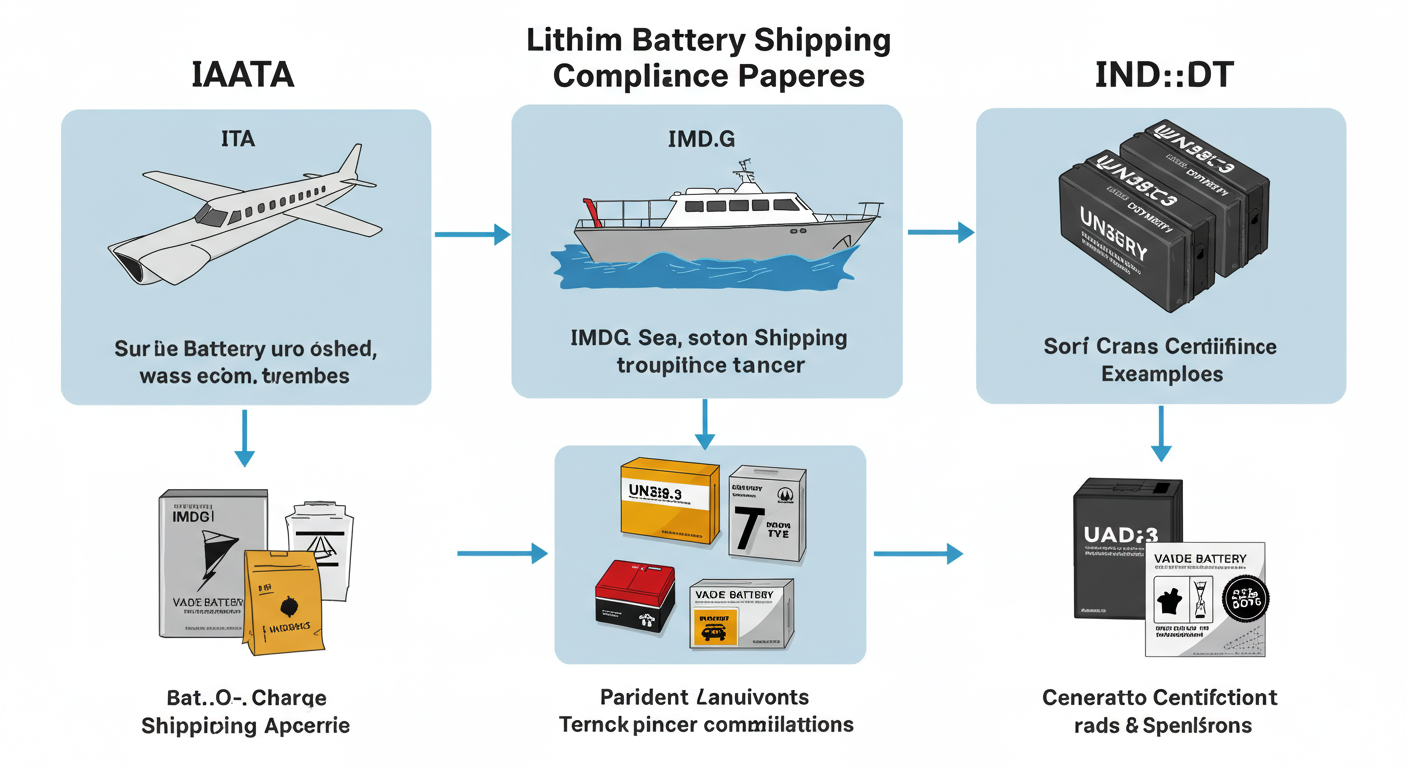Why Are Lithium Battery Shipping Regulations So Strict?
Lithium batteries power everything from medical devices to electric vehicles, but their high energy density and chemical composition create unique transportation risks. Thermal runaway – a chain reaction causing rapid overheating – poses the most significant danger, with potential consequences ranging from cargo fires to catastrophic explosions. This risk is amplified by improper handling, physical damage, or exposure to extreme temperatures during transit.
International regulators classify lithium batteries as Class 9 hazardous materials due to three critical factors:
- Flammable electrolytes in lithium-ion and LiPo batteries
- Short-circuit susceptibility in damaged or poorly packaged cells
- Pressure buildup in defective batteries during altitude changes
At Vade Battery, we engineer fail-safe mechanisms into our custom lithium-ion battery packs, including reinforced separators and multi-layered BMS protection, to minimize these risks at the design stage.
Global Lithium Battery Shipping Standards
Compliance requires navigating a complex regulatory landscape:
Air Transport: ICAO/IATA DGR
The International Air Transport Association (IATA) mandates:
- State-of-charge limits: ≤30% for standalone lithium-ion batteries shipped via cargo aircraft
- Package quantity restrictions: Max 10 kg for low-voltage (<100Wh) batteries per outer box
- Mandatory UN38.3 certification proving successful completion of altitude, thermal, and vibration testing
Maritime Shipping: IMDG Code
The International Maritime Dangerous Goods Code specifies:
- Waterproof secondary containment for battery shipments
- Stacking pressure resistance up to 24 kPa for ocean freight packaging
- Special stowage requirements away from heat sources and combustible materials
Road/Rail: ADR/RID
European road and rail regulations require:
- Shock-absorbent packaging capable of withstanding 1.2m drop tests
- External temperature monitoring for large battery consignments (>500kg)

Packaging Lithium Batteries: Technical Requirements
Multi-Layer Containment System
Vade Battery’s engineered packaging solutions feature:
- Anti-static inner liner: Prevents static discharge between cells
- Compression-resistant spacers: Maintain 1cm minimum between battery clusters
- Vapor-proof outer shell: Constructed from UN-approved 4GV corrugated fiberboard
Critical Safety Components:
- Short-circuit prevention: Terminal caps or non-conductive separators for loose cells
- Pressure relief valves: Required for LiFePO4 batteries exceeding 12V nominal voltage
- Thermal warning labels: Self-adhesive indicators showing exposure to >70°C
Documentation Requirements
Every shipment must include:
- Material Safety Data Sheet (MSDS) with electrolyte composition details
- UN38.3 Test Summary – Available for all Vade Battery certified products
- Lithium Battery Handling Marking: Class 9 hazard diamond with UN number (e.g., UN3480 for Li-ion)

Tips for Shipping Lithium Batteries Safely
To ensure compliance and minimize risks during transit, follow these best practices:
Pre-Shipment Preparation
- Battery Inspection: Verify no physical damage, swelling, or leakage. Vade Battery’s custom battery packs include pre-shipment testing to meet these standards.
- State of Charge (SoC) Management: Adjust charge levels based on transport mode – ≤30% for air cargo, ≤50% for ground transport.
- Documentation Accuracy: Ensure all paperwork, including UN38.3 certification and MSDS, is complete and accessible.
Choosing the Right Carrier
- Certified Partners: Work with carriers trained in IATA Dangerous Goods Regulations (DGR).
- Mode-Specific Compliance: Confirm carriers adhere to IMDG, ADR, or ICAO standards based on shipment route.
- Tracking and Monitoring: Use carriers offering real-time temperature and impact tracking for high-value shipments.
Emergency Preparedness
- Spill Containment Kits: Include non-conductive absorbents and neutralizing agents for electrolyte leaks.
- Fire Suppression: Equip storage areas with Class D fire extinguishers designed for lithium fires.

The Consequences of Non-Compliance
Failing to meet lithium battery shipping regulations can result in severe outcomes:
Financial Penalties
- Fines: Up to $75,000 per violation under U.S. DOT regulations.
- Cargo Rejection: Immediate refusal of non-compliant shipments at ports or airports.
- Insurance Voidance: Most policies exclude coverage for improperly shipped hazardous materials.
Operational Disruptions
- Regulatory Scrutiny: Increased inspections and audits for future shipments.
- Carrier Blacklisting: Prohibition from using major logistics providers.
Safety Risks
- Thermal Events: Fire or explosion during transit, endangering personnel and cargo.
- Environmental Damage: Leakage of toxic electrolytes into ecosystems.
At Vade Battery, we provide comprehensive guidance to help clients navigate these challenges, ensuring every shipment meets global safety standards.
Conclusion: Partner with Experts for Safe Lithium Battery Shipping
Transporting lithium batteries requires meticulous planning, adherence to complex regulations, and collaboration with certified professionals. By leveraging Vade Battery’s expertise in custom battery solutions and compliance, businesses can minimize risks while maintaining supply chain efficiency.
Key Takeaways:
- Always use UN38.3 certified batteries and packaging.
- Follow mode-specific regulations (IATA, IMDG, ADR) for air, sea, and land transport.
- Partner with carriers trained in hazardous materials handling.
- Maintain accurate documentation, including MSDS and test summaries.
For tailored advice on lithium battery shipping or to explore our certified products, contact Vade Battery today. Our team ensures your batteries are designed, packaged, and shipped with safety as the top priority.


